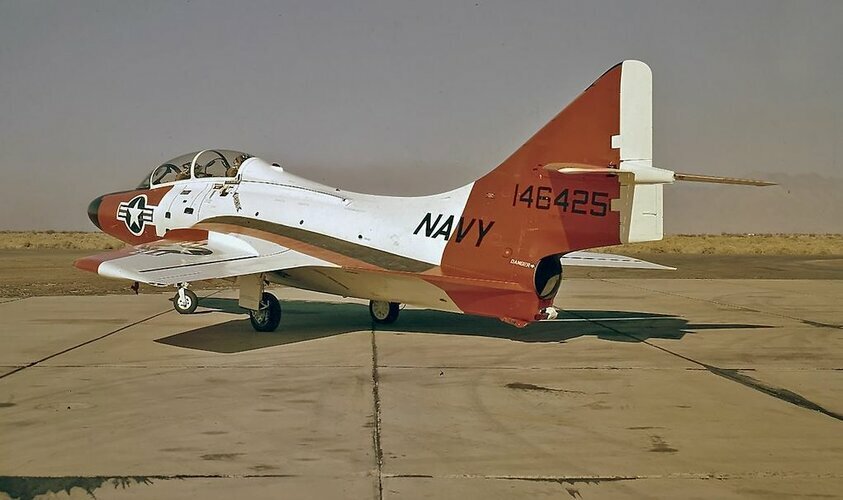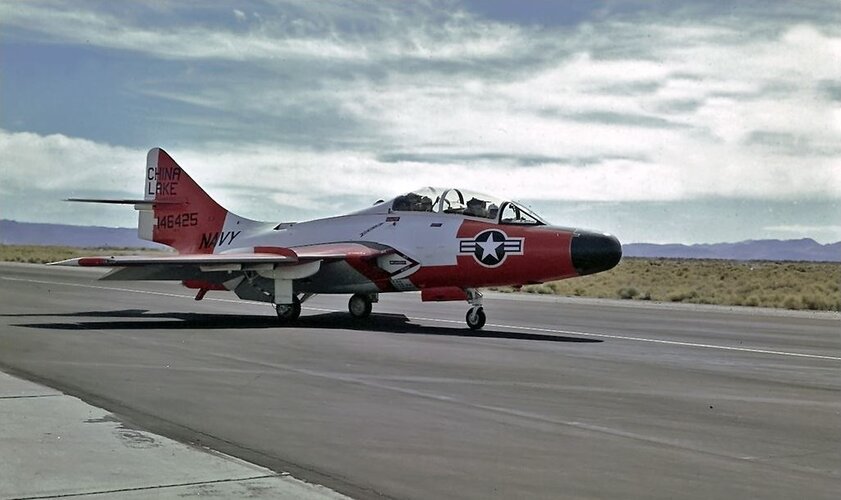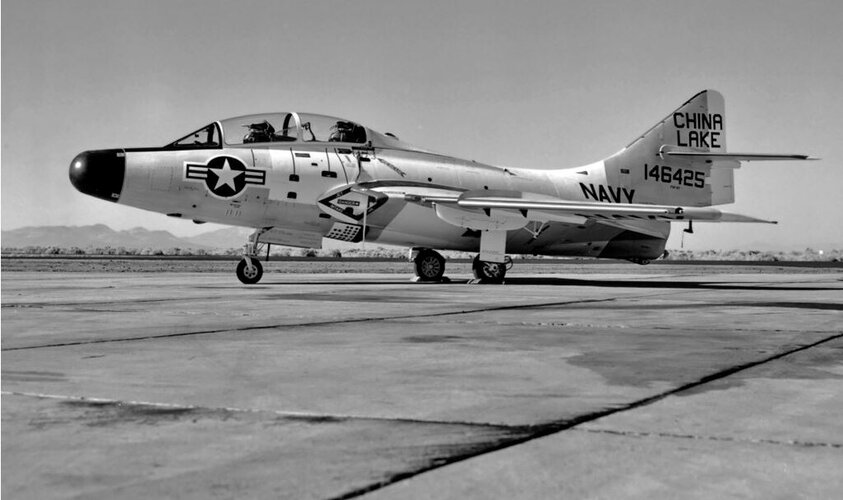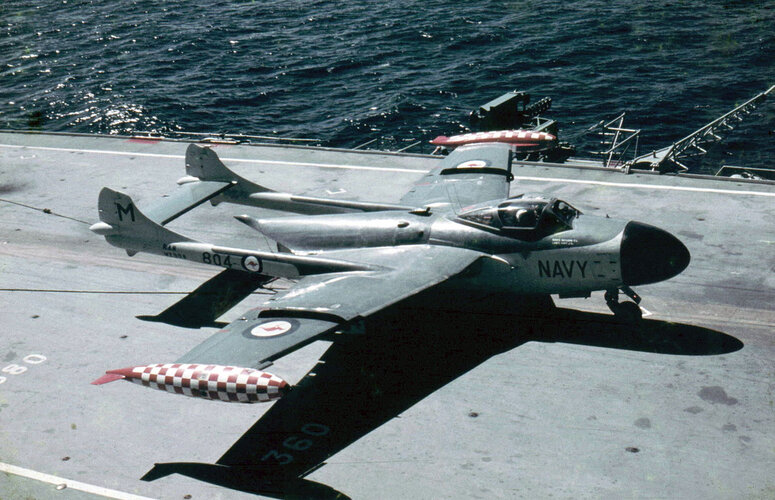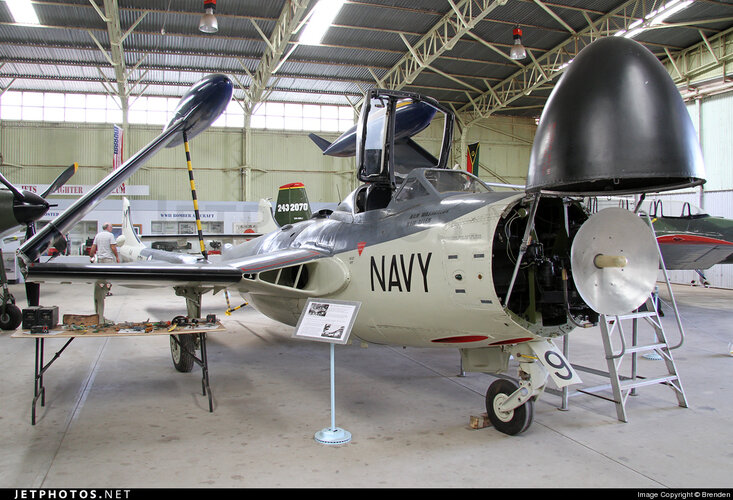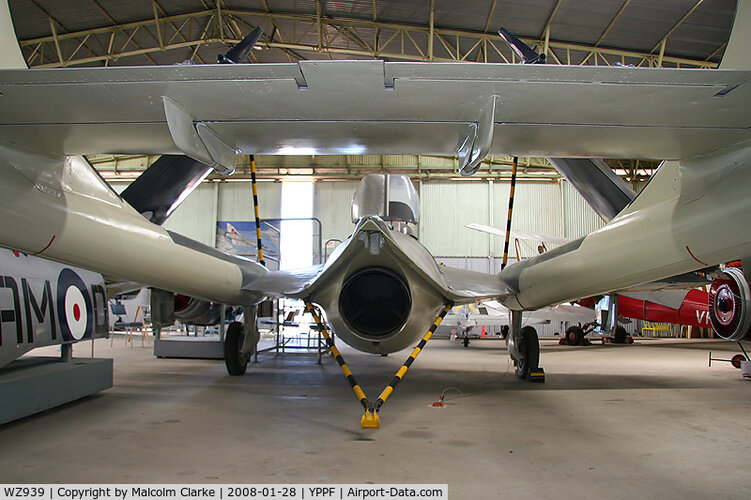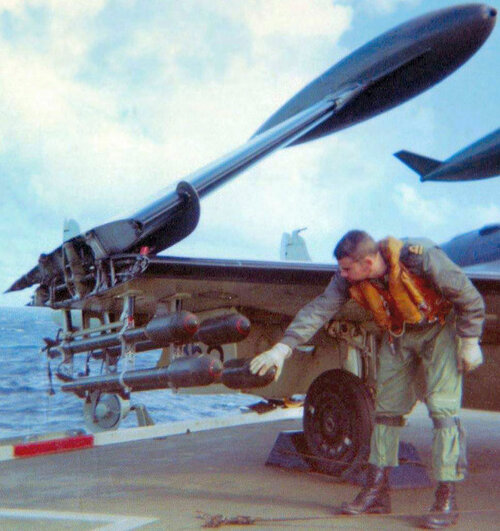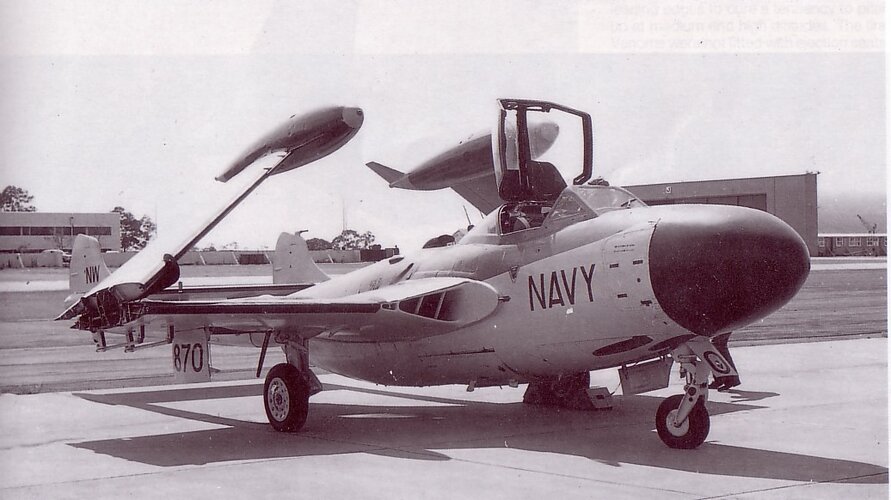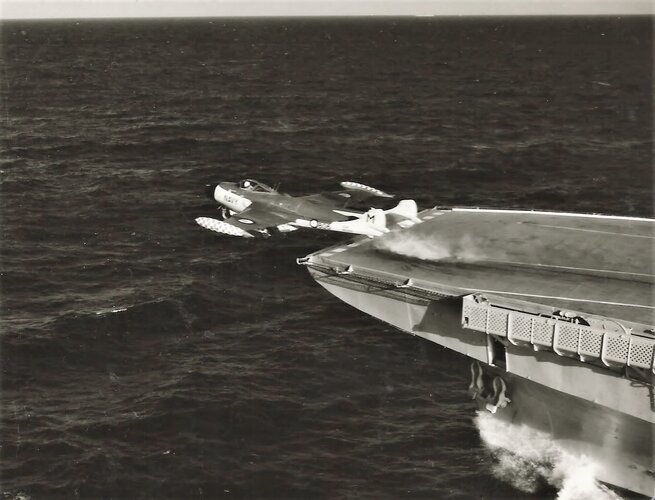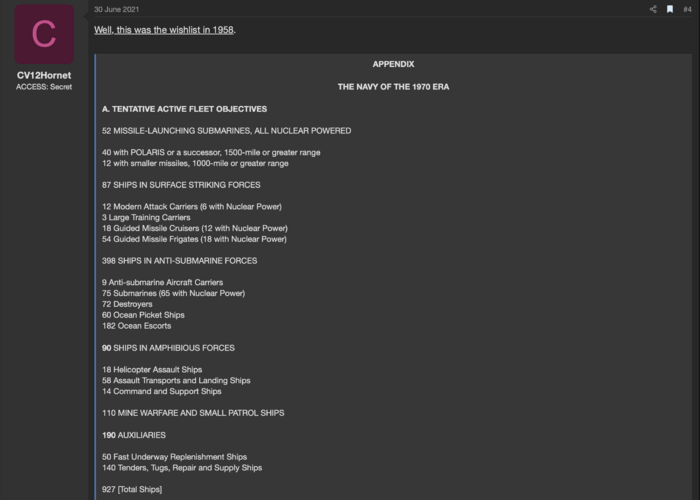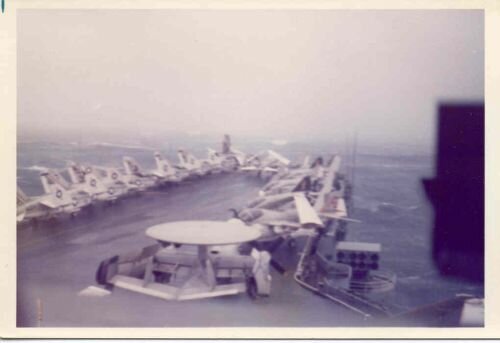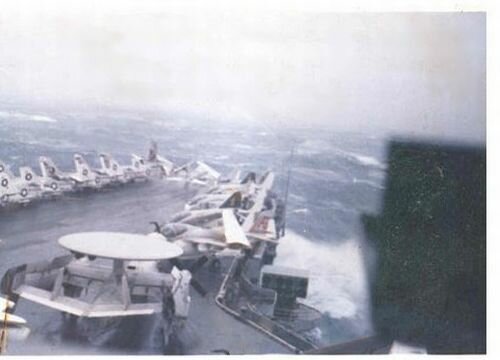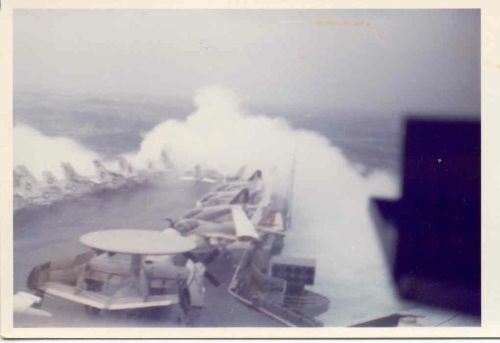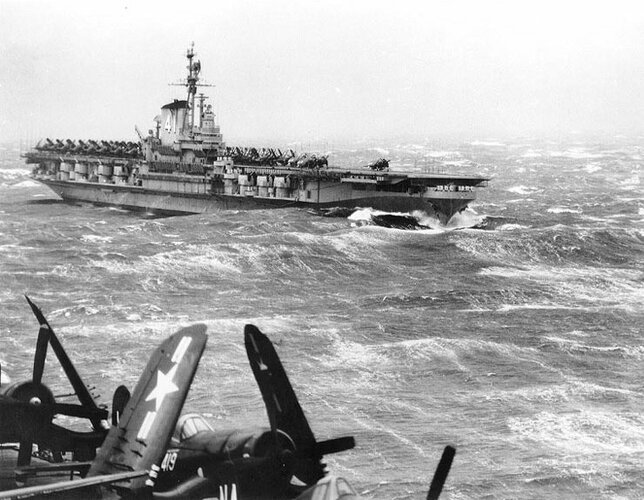Yes, it would do well I think. The F9F-6/8 Cougars operated just fine from the Lake Champlain CVA-39 in 1955 (she got SCB-27A August 1950-September 1952 - she was redesignated CVS-39 in August 1957). The swept-wing Cougar was considered easier to operate from carriers than the straight-wing F9F-2/5 Panthers.
This was a straight-deck carrier with H-8 hydraulic catapults that were about the same end-speed for the same weight as the BS4 catapult on Melbourne - but over a longer run (190' vs 104'), so the airframe structure around the catapult bridle fittings would likely need to be strengthened for the faster rate of acceleration of the BS4.
The F9F-8T (TF-9J from 1962) operated just fine from any Essex class carrier for many a year, and with a J52 its take-off, climb, altitude, and speed would improve appreciably.
The real issue with the TA-4F and Melbourne was that the RAN did not accept that in the event of a missed wire bolter that there was enough angle deck run for the elevators of the TA-4G (RAN version of the TA-4F) to bring the nose (longer and heavier than for the single-seat A-4G) back up to provide lift while the aircraft re-accelerated to flying speed.
This seems strange to me, as the "last wire to angle front edge" distance of Melbourne was 315" and that of the SCB-125 Essexes was 300'... and the USN flew TA-4Js (lightened -Fs with a lower-power engine) from US Lexington CVT-16 (AVT-16 from 1978) from 1969 to 1991!
Perhaps it was a difference in "acceptable risk" standards of the two navies.
The 7-knot difference in ship max speed in favor of the Essex class might have something to do with it as well.
Here are photos of the night-fighter test F9F-8T 146425 with APQ-89 at Armitage Field, NWC China Lake 14 Sept 1961:
View attachment 732648
View attachment 732649
View attachment 732650
However, when the RAN brought HMAS Vengeance back to the UK in 1956 to pick up the just-completed HMAS Melbourne (the whole crew just walked off one carrier and on to the other) they also picked up 39 De Havilland FAW-53 Sea Venoms - so they already had a capable 2-seat night fighter. The Cougar might be more maneuverable, but I'm not sure.
The F9F-8T night fighter lost all of its cannon in gaining the radar (its only air-air weapon was to be 4 AIM-9 Sidewinders) - the FAW-53 had 4 x 20mm cannons and 8 unguided rockets.
Fitting Sea Venoms for AIM-9s would be a lot easier than making a gun pod for the Cougars (or adding a fairing for 1 or 2 x 20mm cannon) and dealing with whatever flight changes that would introduce.
View attachment 732652
View attachment 732653
View attachment 732654
View attachment 732655
One AIM-9 per rack would do just fine - 4 to match the Cougar's load:
View attachment 732657
View attachment 732658

